Consecutive Numbers
Consecutive numbers are numbers that follow each other in order, with a difference of 1 between each pair of numbers. For example, 3, 4, and 5 are consecutive numbers because they are in order and the difference between each pair is 1.
Properties of Consecutive Numbers
- Odd and Even Numbers: If one of the consecutive numbers is even, the next one is odd, and vice versa.
- Sum and Average: The sum of consecutive numbers can be found by multiplying the average of the numbers by the total count of numbers.
- Algebraic Representation: Consecutive numbers can be represented algebraically as x, x+1, x+2, etc., where x is the first number.
Examples
Example 1: Find three consecutive numbers if the sum of the first two is 25.
Let the first number be x. The next two consecutive numbers are x+1 and x+2. Given that the sum of the first two numbers is 25, we have the equation:
x + (x+1) = 25
Solving for x, we get x = 12. So, the consecutive numbers are 12, 13, and 14.
Example 2: The average of three consecutive numbers is 15. Find the numbers.
Let the first number be x. The next two consecutive numbers are x+1 and x+2. Given that the average is 15, we have the equation:
(x + x+1 + x+2)/3 = 15
Solving for x, we get x = 14. So, the consecutive numbers are 14, 15, and 16.
Study Guide
When working with consecutive numbers, remember the following key points:
- Consecutive numbers follow each other in order with a difference of 1 between each pair of numbers.
- If one of the consecutive numbers is even, the next one is odd, and vice versa.
- The sum of consecutive numbers can be found by multiplying the average of the numbers by the total count of numbers.
- Algebraically, consecutive numbers can be represented as x, x+1, x+2, etc., where x is the first number.
[Consecutive Numbers] Related Worksheets and Study Guides:
.◂Math Worksheets and Study Guides Eighth Grade. Three dimensional geometry/Measurement
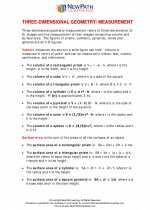
 Worksheet/Answer key
Worksheet/Answer key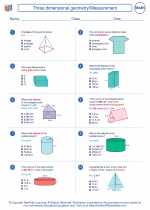
 Worksheet/Answer key
Worksheet/Answer key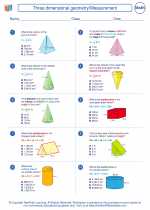
 Worksheet/Answer key
Worksheet/Answer key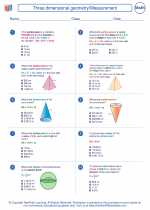
 Worksheet/Answer key
Worksheet/Answer key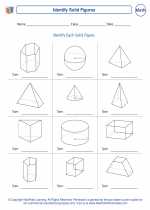
 Worksheet/Answer key
Worksheet/Answer key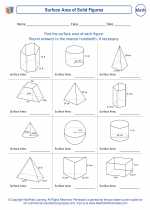
 Worksheet/Answer key
Worksheet/Answer key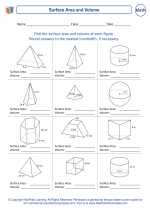
 Worksheet/Answer key
Worksheet/Answer key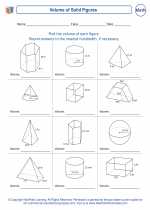
 Worksheet/Answer key
Worksheet/Answer key
 Worksheet/Answer key
Worksheet/Answer key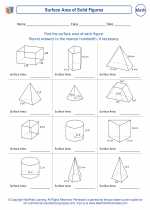
 Worksheet/Answer key
Worksheet/Answer key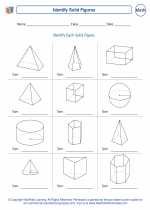
 Worksheet/Answer key
Worksheet/Answer key
